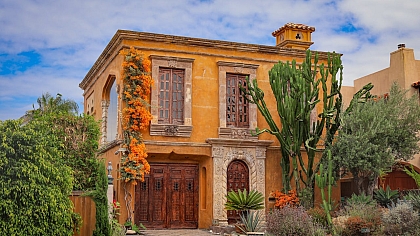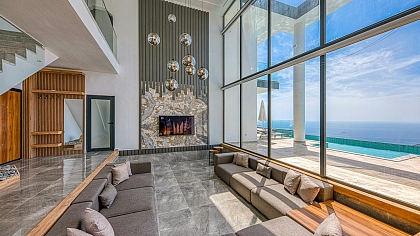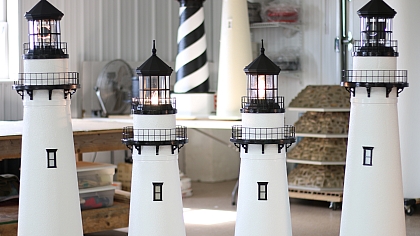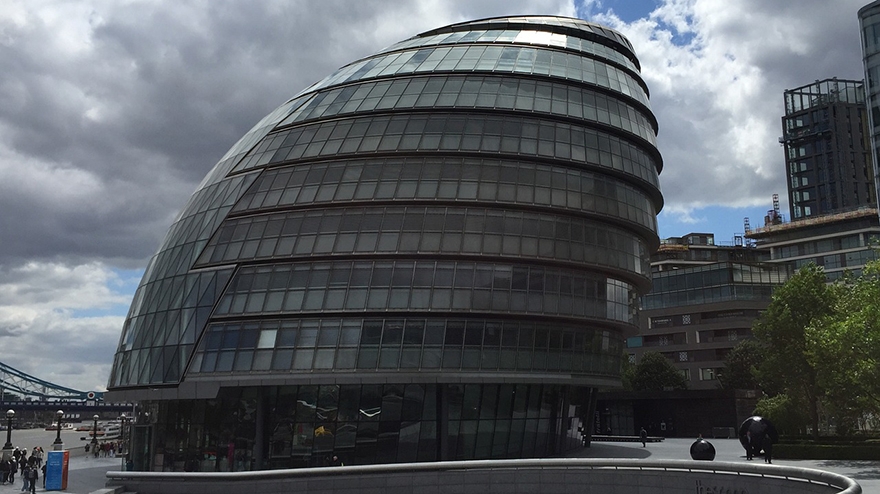
15 Most Influential & Creative British Architects
1. Inigo Jones 1573 – 1652
Inigo Jones was one of the first prominent English architects during the early modern era. He was influenced by the principles of Roman architect Vitruvius and implemented them in his projects. He was the first to bring classical Roman architecture to England.
Early Life & Education
Inigo Jones was born on 15th July 1573 in London, United Kingdom. A wealthy benefactor got inspired by Inigo Jones’ sketches, so he managed to send him to study in Italy around 1600. After studying art and drawing in Italy, Inigo Jones moved to Demark and worked on the projects of Frederiksborg Palace in Hillerod and Rosenborg Palace in Copenhagen, Denmark for King Christian IV, King of Denmark and Norway.
Career & Projects
Inigo Jones was the one who introduced the proscenium arch to the Britain theatre. He served as a costume designer as well as a theatrical designer. One of his earliest buildings was the Queen’s House, Greenwich, London Borough designed on an ancient architectural design influenced by classical Rome and Palladio. It was built for Anne, wife of King James I. Inigo Jones designed the Banqueting House, Whitehall Palace in Westminster based on the design ideas of Italian architects Palladio and Vincenzo Scamozzi.
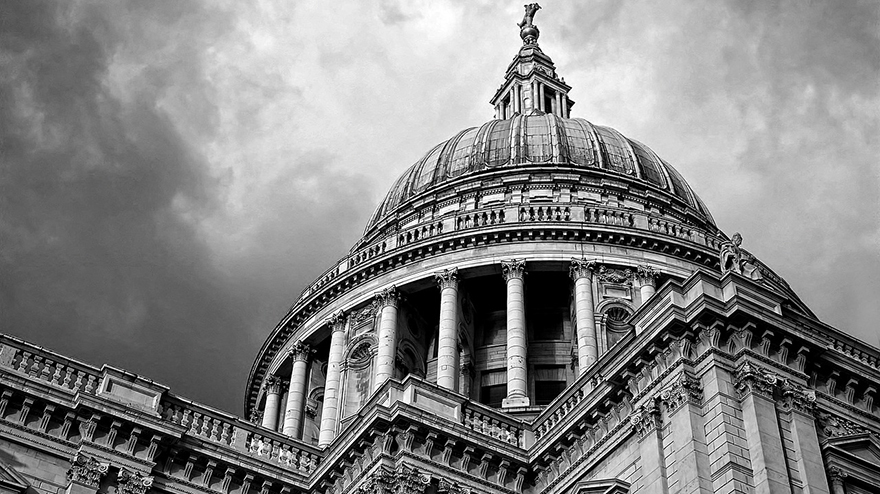
Inigo Jones is also famed for his other projects such as Covent Garden masterplan, London; Wilton House, Salisbury, Wiltshire; Queen’s Chapel for King Charles I’s wife Henrietta Maria, St. James’s Palace, central London; St. Paul’s Church, Bedford Street, Covent Garden, central London; Lincoln’s Inn Fields Square, London; Lindsey House, London; St. Paul’s Cathedral, London; Palace of Whitehall, Westminster, Middlesex and others.
Inigo Jones died on 21st June 1652 in London, United Kingdom.
2. Nicholas Hawksmoor 1661 – 1736
Nicholas Hawksmoor was one of the British architects promoting Baroque Architecture in England during the 17th and 18th centuries. Nicholas Hawksmoor collaborated with the other prominent English architects of the same era John Vanbrugh and Christopher Wren. Nicholas Hawksmoor was involved with Greenwich Hospital; St. Paul’s Cathedral; Castle Howard; Christopher Wren’s churches in London; and Blenheim Palace.
Early Life & Education
Nicholas Hawksmoor was born in 1661 in Nottinghamshire, England.
Career & Projects
When Nicholas Hawksmoor was eighteen, Christopher Wren hired him at his office where Nicholas Hawksmoor worked on major projects such as Greenwich Hospital; Chelsea Hospital; Hampton Court Palace and St. Paul Cathedral.
Nicholas Hawksmoor’s other notable projects are St. George’s Church, Bloomsbury; St. George in the East; Christ Church, Spitalfields; St. Anne’s Limehouse; St. Alfege’s Church, Greenwich; Clarendon Building, Oxford; Codrington Library or All Souls College Library; Worcester College; King’s College, Cambridge and others. He also designed The Carrmire Gate, The Mausoleum, The Pyramid and The Temple of Venus at Castle Howard.
Nicholas Hawksmoor died on 25th March 1736 in Millbank, central London, England.
3. Edwin Lutyens 1869 – 1944
Edwin Lutyens was a well-known English architect who is widely recognized for implementing traditional architectural themes in his public buildings, villas and memorials. He worked on several major projects in Delhi, India such as the India Gate.
Early Life & Education
Edwin Lutyens was born on 29th March 1869 in Kensington, London, UK. His father, Charles Henry Augustus Lutyens was a painter and troop. His mother was Mary Theresa Gallwey. He was brought up in Thursley Village, Surrey. He got his architectural education from South Kensington School of Art, London and graduated in 1887.
Career & Projects
Edwin Lutyens began working for British architect Ernest George and later he joined Harold Peto. He also collaborated with English architect Herbert Baker. He established his architectural firm in 1888.
His incredible architectural achievements are the India Gate; Rashtrapati Bhavan (Viceroy’s House); the Cenotaph, Whitehall; Castle Drogo; Hyderabad House; 100 King Street; Theipval Memorial; Lindisfarne Castle and several more. His projects were largely influenced by Indian architecture.
Sir Edwin Landseer Lutyens died on 1st January 1944 in Marylebone, London, UK at the age of 74.
4. Clough Williams Ellis 1883 – 1978
Clough Williams Ellis was an influential Welsh architect. He designed a tourist village, Portmeirion, an Italianate style of architecture in Gwynedd, North Wales.
Early Life & Education
Sir Bertram Clough Williams Ellis was born on 28th May 1883 in Gayton, Northamptonshire, UK. His father was John Clough Williams Ellis, a mountaineer and a member of the clergy. His mother was Ellen Mabel Greaves.
He initially studied at Oundle School, Northamptonshire. He enrolled at Trinity College in Cambridge but did not complete it. He studied briefly at the Architectural Association School of Architecture, London. While studying, he designed a summer residence, Larkbeare, in Oxfordshire for Anne Wynne Thackeray.
Career & Projects
After spending only a few months at the institute from 1903 to 1904, Clough Williams Ellis joined an architectural firm for another few months. He established his own architectural company in London shortly after that. Clough Williams Ellis served in the Army during the First World War.
When he returned from the war, he worked on an apple warehouse and Harrowhill Copse house in Newlands Corner employing the rammed earth technique. He bought some area in North Wales in 1925 that was developed into the village of Portmeirion in Italianate style. He worked on other projects in Cornwell village, Oxfordshire; Cushendun village, Northern Ireland; Stowe village, Buckinghamshire and Tattenhall village, Cheshire. He died on 9th April 1978 at the age of 94.
5. Berthold Lubetkin 1901 – 1990
Berthold Lubetkin was one of the Soviet British architects who promoted modernist architecture in Britain during the 1930s. He won the RIBA Royal Gold Medal in 1982. He designed the London Zoo penguin pool, Spa Green Estate, Highpoint housing complex and Finsbury Health Centre.
Early Life & Education
Berthold Romanovich Lubetkin was born on 14th December 1901 in Tbilisi, Georgia. His father, Roman Aronovich Lubetkin, served as a railroad civil engineer. Berthold Lubetkin got his education in Saint Petersburg (Leningrad) and Moscow, Russia.
Career & Projects
Berthold Lubetkin partnered with Jean Ginsburg during the 1920s in Paris where he worked on an apartment design located on the Avenue de Versailles. He met Swiss-French architect Le Corbusier there. In 1931, he moved to London from Russia.
Berthold Lubetkin co-founded an architectural firm, Tecton Group, in London in 1932 along with other partners such as Francis Skinner, Godfrey Samuel, Denys Lasdun and Lindsay Drake. Tecton worked on various buildings for the London Zoo including penguin pool and gorilla house. They also designed Dudley Zoo; a park in Whipsnade; Highpoint One & Two, apartment buildings, Highgate; house, Sydenham, South London and contributed to western architecture.
In 1936, the Tecton group started an organization called ‘The Architects & Technicians Organization’. The Tecton group was dissolved in 1939. Berthold Lubetkin died on 23rd October 1990 in Bristol, UK at the age of 88.
6. Basil Spence 1907 – 1976
Basil Spence was an architect of Scottish origin. He is chiefly known for his designs for the New Zealand Parliament Wing, Beehive, New Zealand and Coventry Cathedral, Britain. He was linked with modernism and brutal architecture.
Early Life & Education
Basil Spence was born on 13th August 1907 in Bombay, India. His father was Urwin Archibald Spence. He initially got his education from the John Connon School, in India. He went to Scotland in 1919 to study at George Watson’s College, Edinburgh and graduated in 1925. In 1925, he began studying architecture at Edinburgh College of Art, Scotland. While studying, he worked for some architects such as Frank Charles Mears, Reginald Francis Joseph Fairlie and Leslie Grahame.
The Scottish architect Basil Spence worked for Edwin Lutyens in London together with Scottish architect William Hardie Kininmonth. While Basil Spence was in London, he enrolled in the Bartlett School of Architecture.
In 1930, Basil Spence went back to Edinburgh College of Art to complete his studies. He served as an educator while studying at the institute and taught till 1939. He graduated in 1931.
Career & Projects
Along with William Hardie Kininmonth, Basil Spence opened his practice, Kininmonth & Spence, in the studio of architects Robert Rowand Anderson and Arthur Forman Balfour Paul in 1931. Kininmonth & Spence united together with Rowand Anderson & Paul and became one in 1934.
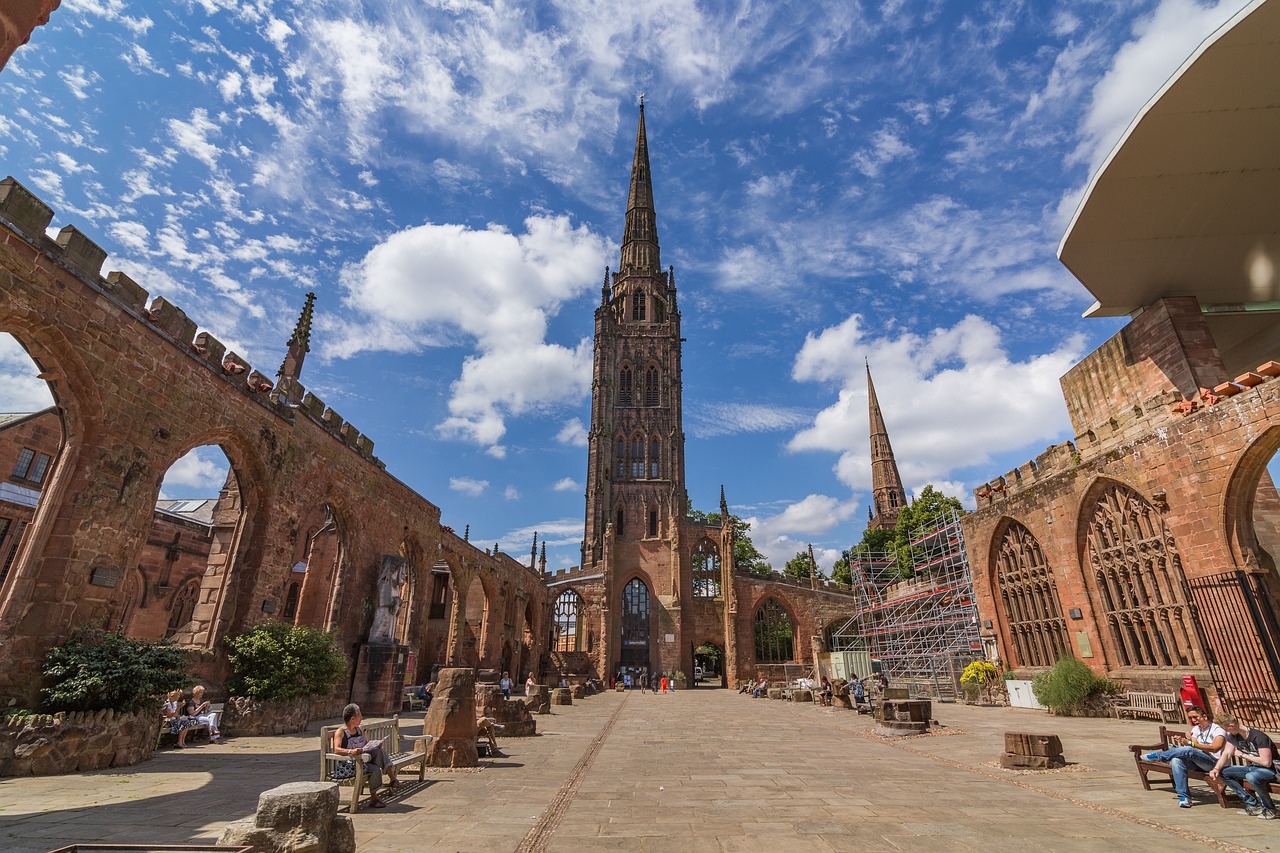
His notable buildings are the New Zealand Parliament Wing, Beehive, New Zealand; Hyde Park Barracks (Knightsbridge Barracks), central London; Coventry Cathedral; pavilion at Empire Exhibition 1938, Glasgow; Broughton Place, Biggar, Scotland and others. He played an astonishing role in the prosperity of Western architecture. Basil Spence died on 19th November 1976 at the age of 69 in Suffolk, UK.
7. Jane Drew 1911 – 1996
Jane Drew was an English architect and urban designer. She studied architecture at the Architectural Association School, in London. She was a strong advocate of the modernist architecture movement. She designed several housing projects in the United Kingdom, India, West Africa and Iran. She was an author of books on architecture.
Early Life & Education
Jane Drew Iris Estelle Radcliffe Drew or Joyce Beverly Drew was born on 24th March 1911 in Thornton Heath, Croydon. Her father was Harry Guy Radcliffe Drew who designed surgical tools and also established the Institute of British Surgical Technicians. Her mother, Emma Spering Jones was an educationist at a school.
Earlier, Jane Drew attended Woodford School, East Croydon. She studied at Croydon High School, London. Jane Drew enrolled at the Architectural Association School of Architecture in 1929 and graduated in 1934.
Career & Projects
Dame Jane Drew joined architect Joseph Hill in 1934. In 1933, she got married to architect James Thomas Alliston with whom she founded her architectural studio. Their marriage ended in 1939.
She became a key founding member of the Modernist movement of architecture in England. MARS Group (Modern Architectural Research) was a team of architects, industrialists and painters that promoted this movement. Jane Drew met Maxwell Fry here and married him in 1942. Both founded their architectural firm ‘Fry, Jane & Partners’.
Jane Drew designed educational institutes such as universities and schools in West Africa. Jane Drew worked on several projects in Chandigarh, India; Iran; Nigeria, Ghana and Sri Lanka. She played her part in founding the Institute of Contemporary Arts (ICA), The Mall in London. Jane Drew died on 27th July 1996.
8. Denys Lasdun 1914 – 2001
Denys Lasdun was a prominent English architect based in London. He is well known for his design for the Royal National Theatre in London. It was designed on the theme of Brutalist architecture.
Early Life & Education
Sir Denys Louis Lasdun was born on 8th September 1914 in Kensington, London, UK. His father was Nathan Lasdun and his mother was Julie. He got his education at the Architectural Association School of Architecture, London.
Career & Projects
Denys Lasdun joined the studio of architect Wells Coates. He was inspired by the works of Ludwig Mies van der Rohe, Le Corbusier and Nicholas Hawksmoor. Denys Lasdun worked for Berthold Lubetkin’s group, Tecton and soon became its partner.
During the 1950s, he became a partner in ‘Fry, Drew & Partners’ which was renamed ‘Fry, Drew, Drake & Lasdun’. He designed the Hallfield School; Royal National Theatre; SOAS building, University of London; Institute of London, University of London and others.
Recognition
In 1977, Denys Lasdun achieved the RIBA Royal Gold Medal. He died on 11th January 2001 in Fulham, London.
9. Kenneth Frampton 1930 – today
Kenneth Frampton is a notable British architect. He is a historian and a design critic. He teaches at Columbia University’s Graduate School of Architecture, Planning and Preservation.
Early Life & Education
Kenneth Brian Frampton was born on 20th November 1930 in Surrey, United Kingdom. He was educated at Guildford School of Art. He later enrolled at the Architectural Association School of Architecture, London.
Career & Projects
Kenneth Frampton worked for ‘Douglas Stephen & Partners’, London. He taught at the Royal College of Art, London from 1961 to 1964. He also taught architecture at the Architectural Association School of Architecture, London; Princeton University School of Architecture; and Bartlett School of Architecture, London. He served as the editor of ‘Architectural Design’ journal. One of his noted projects is the Corringham Building, in London.
Recognition
Kenneth Frampton received the Schelling Architecture Theory Prize in 2012. He was honoured with the President’s Medal from the Architectural League of New York in 2005.
10. Christopher Alexander 1936 – today
Christopher Alexander is a reputable British American architect. He also serves as a design theorist and an educationist at the University of California, Berkeley.
Early Life & Education
Christopher Wolfgang Alexander was born on 4th October 1936 in Vienna, Austria. He moved to England with his family in 1938. He got his early education from Oundle School in England. He studied physics and chemistry at Trinity College, Cambridge University. He graduated from an architecture program and completed his post-graduation in mathematics. He migrated to America in 1958 and studied at the Massachusetts Institute of Technology and Harvard University. Christopher Alexander completed his doctorate in Architecture at Harvard University.
Career & Projects
Christopher Alexander taught architecture at Berkeley California in 1963. He returned to England in 2002 and lived in Arundel. His most remarkable works are from Eishin Campus, Tokyo; West Dean Visitors Centre, Sussex, England; Sala House, Albany; Martinez House, Martinez; Julian Street Inn and others.
11. Will Alsop 1947 – 2018
Will Alsop is a British architect. He taught at the Canterbury School of Architecture of the University for the Creative Arts, England. He designed numerous modern buildings characterized by unique volumes and vibrant colours.
Early Life & Education
Will Allen Alsop was born on 12th December 1947 in Northamptonshire, United Kingdom. His father was an accountant who died when Will Allen Alsop was only 16 years old. Will Allen Alsop began working with an architect while taking classes during the evenings.
While studying at Northampton Art School, Will Alsop learned a lot from the English artist Henry Bird. Will Alsop later enrolled at the Architectural Association School of Architecture.
Career & Projects
Will Alsop join the office of Jane Drew and Maxwell Fry for a brief time? Later he worked for English architects Cedric Price and Roderick Ham. Will Alsop began his architectural studio, Alsop & Lyall, along with John Lyall, his friend in 1981 in Hammersmith, west London. Jan Stormer came to work with them. In 1991, he became a partner of the firm, Alsop & Stormer. John Lyall had left the firm.
In 2000, Alsop & Stormer parted their studios. Will Alsop’s studio was then called Alsop Architects. His notable buildings are the Gao Yang cruise terminal, Shanghai; swimming pool, Sheringham, Norfolk; Cardiff Bay Visitor Centre, Wales; Hamburg Ferry Terminal, Germany; Le Grand Bleu, Marseille and others.
Recognition
Will Alsop won the Stirling Prize in 2000. He was honoured with a Worldwide Award from RIBA in 2004. Will Alsop died on 12th May 2018.
12. Yvonne Farrell 1951 – Today
Yvonne Farrell is an Irish architect as well as an academic. Yvonne Farrell set up an architectural practice Grafton Architects along with Shelley McNamara.
Early Life & Education
Yvonne Farrell was born in 1951. She was educated at University College Dublin and graduated in 1974. She founded her practice Grafton Architects based in Dublin in 1977 along with Shelley McNamara.
Career & Projects
Yvonne Farrell and Shelley McNamara produced some of the most notable projects such as the Rontgen Building; Grafton Building, Milan, Italy; Institut MMines Telecom, Paris, France; Department of Finance, Dublin, Ireland and others.
Recognition
In 2008, her firm was the winner of the World Building of the Year award for the Bocconi University project located in Milan. In 2016, it was honoured with the RIBA International Prize and in 2020 with the Royal Gold Medal. Yvonne Farrell won the Pritzker Architecture Prize together with Shelley McNamara in 2020.
13. Shelley Mcnamara 1952
Shelley McNamara is an Irish architect as well as an academic.
Early Life & Education
She was born in 1952 in Lisdoonvarna, Ireland.
Career & Projects
Shelley McNamara set up an architectural practice Grafton Architects along with Yvonne Farrell in 1977. Yvonne Farrell and Shelley McNamara largely worked on educational buildings for various universities in London, Limerick, Toulouse etc. She taught at University College Dublin in 1976 as well as other institutes.
Recognition
In 2008, her firm was the winner of the World Building of the Year award for the Bocconi University project located in Milan. In 2016, it was honoured with the RIBA International Prize and in 2020 with Royal Gold Medal. Shelly McNamara and Yvonne Farrell were honoured with the Pritzker Prize for architecture in 2020.
14. Ken Shuttleworth 1952
Ken Shuttleworth is an influential English architect. He is renowned for The Millennium Bridge (London Millennium Footbridge), London; The Gherkin Tower (30 St. Mary Axe), London and City Hall, London.

Early Life & Education
Ken Shuttleworth was born in September 1952 in Birmingham, England. Ken Shuttleworth studied at the Leicester School of Architecture of De Montfort University. His fellows named him ‘Ken the Pen’ for his fluidity in drawings.
Career & Projects
Ken Shuttleworth partnered with Foster & Partners in 1977 where he worked on many major projects such as The Hong Kong & Shanghai Banking Corporation building. Ken Shuttleworth established his architectural practice, Make Architects in 2004.
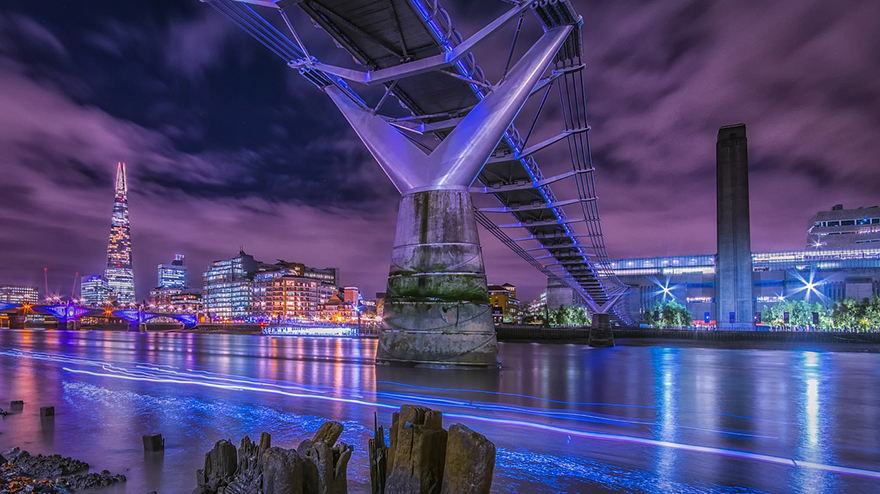
His celebrated buildings include Wembley Stadium; The Cube; 2012 London Olympic Handball Arena; Swiss Re Headquarters; Carre d’Art, Nimes, France; Library at Cranfield University; Chek Lap Kok airport, Hong Kong; The Millennium Bridge (London Millennium Footbridge), London; The Gherkin Tower (30 St. Mary Axe), London; City Hall, London and others.
15. Piers Taylor 1968
Piers Taylor is a British architect and a presenter of series, i.e., The World’s Most Extraordinary Homes and The House That £100k Built on BBC Two channel.
Early Life & Education
Piers Taylor was born in 1968. He was educated at the University of Technology Sydney (UTS).
Career & Projects
Piers Taylor established a workshop, Mitchell Taylor Workshop, along with Mitchell Eley Gould in 2006. He founded his architectural firm, Invisible Studio in 2012.
Piers Taylor believes in simplicity in design and architecture. He focuses on green architecture and energy efficiency for his projects. His noted projects are Room 13 community art studio, Hartcliffe, Bristol and Moonshine, Piers Taylor house and studio.
Recognition
Piers Taylor is the winner of the award from the Royal Institute of British Architects.
Some Other Remarkable British Architects and Authorities
1. Dermot Bannon is a famed Irish architect and designer widely recognized as he hosts ‘Room to Improve’ and ‘House Hunters TV series. He owns his architectural practice, Dermot Bannon Architects DBA which was established in 2008 when he renovated his Drumcondra house (Dermot Bannon house).
2. Paul Mcclean is an influential architect from Ireland.
3. Elsie Owusu is a British architect, born in Ghana. She is one of the founding members of the Society of Black Architects. She has been a member of the Royal Institute of British Architects RIBA since the year 2014.
RIAI
RIAI - Royal Institute of the Architects of Ireland is the regulatory body of the architecture profession in Ireland. It was established in 1839. RIAI CPD is the training program for architects and architectural firms in Ireland. CPD stands for Continuing Professional Development and it aims to provide high quality up-to-date education to the professionals.
RIBA
RIBA - Royal Institute of British Architects is the regulatory body of the architecture profession in Britain. It was established in 1837. RIBA presents awards such as Royal Gold Medal, Stirling Prize and President's Medal to the best architectural project that is up to the mark of RIBA architecture standards.
A RIBA chartered practice is a corporate member of the professional body RIBA. Chartered Architects are the ones that have membership with RIBA or RSUA (Royal Society of Ulster Architects) or RIAS (Royal Incorporation of Architects in Scotland).
Simon Allford is the current RIBA president for the year 2021-2023.
BRITISH STUDIOS
1. AFL Architects
AFL Architects is an architectural firm based in London, Manchester and Birmingham, England. The firm also has its studio in Doha, Qatar. Some of the most remarkable designs by the international firm are Parkside, retail and residential towers, Coventry, UK; Copr Bay, sports & leisure club, Swansea, UK; The Den Redevelopment, the sports & leisure club, London, UK and so on.
2. Assemble Architects
Assemble is a collective, based in London, UK, that works across the disciplines of architecture, art and design.
3. AWW Architects
AWW Architects is an internationally well-known architectural practice with studios in London, Plymouth and Bristol, England.
4. BDP Architects
BDP Architects is an international architecture and engineering firm with its headquarters based in Manchester, England. Building Design Partnership Ltd or BDP Architects was established in 1961 by its founder George Grenfell Baines along with architects John Wilkinson and Bill White.
5. Bureau de Change Architects
Bureau de Change Architects is an architecture firm with a studio based in London, England. It was established by influential architects Billy Mavropoulos and Katerina Dionysopoulo.
6. Cube Architecture
Cube Architecture is an architecture and design firm based in Greater Manchester, England.
7. David Chipperfield Architects
David Chipperfield Architects is an international architectural and design firm based in London, England. It has other design studios in other parts of the world too, Berlin, Germany; Milan, Italy and Shanghai, China. The company has won more than 40 American Institute of Architects AIA Awards. It designed a notable villa in LA for American film producer and director, Michael Bay. Cooper Hewitt, Smithsonian Design Museum awarded David Chipperfield Architects with the National Design Award for Interior Design in 2018. It was established in 1985 by the English architect David Chipperfield. David Chipperfield was born on 18th December 1953 in London, UK. He received a couple of awards during his career, the RIBA Stirling Prize, Tessenow Gold Medal, Andrea Palladio Prize and Royal Gold Medal.
8. Duggan Morris Architects
Duggan Morris Architects is an architectural and engineering firm based in London, England and Copenhagen, Denmark. It is now known as ‘Morris + Company’.
9. Faulknerbrowns Architects
Faulknerbrowns is an international architecture studio based in Newcastle Upon Tyne, UK and Vancouver, Canada.
10. Hassell Architects
Hassell Architects is an architecture and design firm having studios in the UK, Australia, Singapore and China.
11. Jsa Architects
Jsa Architects is an architecture and design firm with offices in Berkshire and Surrey, England.
12. Jsa Architects
Jsa Architects is an architecture and design firm with its headquarters in Derby and regional offices in Solihull and Nottingham. It was established in 2002.
13. Mamou Mani Architects
Mamou Mani Ltd Architects is an architectural office with design and fabrication services, based in London, UK.
14. Mica Architects
Mica Architects is an architecture, urban planning, landscape and interiors firm located in London.
15. Pier Architecture
Pier Architecture is an architecture firm based in England. It was founded by Bill Pier.
16. Stufish
Stufish architects are entertainment architects based in London, England.
17. AJ Architects
AJ Architects is an architecture and design firm based in Wetherby, England.
18. Resi Architects
Resi Architects is an architectural firm based in London, United Kingdom, specializing in residential architecture.
19. Practice Architecture
Practice Architecture is an architectural firm based in London, United Kingdom.
20. On Architecture
On Architecture is an architectural firm based in Kent and London, United Kingdom.




